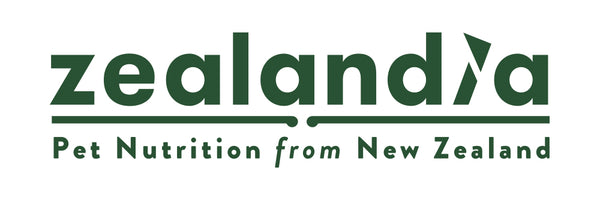What food is best for dogs and cats with pancreatitis?

Written by Dr. Rosa Leedham BVMedSci (Hons) BVM BVS MRCVS (United Kingdom)
Pancreatitis is a potentially life-threatening condition which can affect both dogs and cats. But what is pancreatitis? How is it treated? And what should you feed a dog or cat with pancreatitis? Let’s take a look.
What is pancreatitis?
Pancreatitis means inflammation of the pancreas. The pancreas is a small fleshy organ which sits near the stomach and intestines inside the abdomen. The pancreas has many functions, but is important for digestion and regulating blood sugar levels. When the pancreas becomes inflamed, the digestive enzymes which are normally only active in the gut become activated in the pancreas itself, and the surrounding areas. This results in pain and swelling and the enzymes start to degrade the pancreas itself.
There are two types of pancreatitis – acute and chronic.
Acute pancreatitis
This is where the pancreas suddenly becomes inflamed. This can cause a range of symptoms, from mild signs to a life-threatening illness requiring hospitalisation. Unfortunately, once an animal has had acute pancreatitis, this does mean they are prone to future episodes.
Chronic pancreatitis
This is a long-standing condition where the pancreas becomes permanently damaged. In many cases, the symptoms of chronic pancreatitis are less severe compared with acute pancreatitis. Sometimes the signs may be intermittent only.
However, long-term inflammation of the pancreas can result in additional health problems. For example, when the pancreas becomes damaged, it may not be able to produce enough digestive enzymes. This can result in a condition called ‘exocrine pancreatic insufficiency’ where animals can’t properly absorb nutrients. Also, inflammation of the pancreas can damage the cells which are responsible for making insulin to control blood sugars. This means that animals with chronic pancreatitis can sadly develop diabetes mellitus.
Although any dog or cat can suffer from pancreatitis, there are certain risk factors which make a pet more likely to have this condition. For example, certain breeds of dogs such as cocker spaniels, schnauzers and West Highland White Terriers are prone to pancreatitis. Similarly, Siamese cats are also at a higher risk.
Middle-aged to older animals are more likely to get pancreatitis. Overweight animals are at a higher risk, as well as dogs with Cushing’s Disease or those being treated with certain medications (such as azathioprine).
What are the symptoms of pancreatitis?
The symptoms of pancreatitis vary depending on a number of factors, including whether a pet is suffering from the acute or chronic form of the disease.
Acute pancreatitis
- Reduced or total loss of appetite
- Vomiting
- Diarrhoea
- Abdominal pain – pets may cry when the abdomen is touched or adopt the ‘prayer position’ (this is where they have their front legs and head low to the floor, but their rear end in the air).
- Fever
- Jaundice (yellow discolouration to the eyes, skin and gums) – this is more common in cats
Chronic pancreatitis:
- Intermittent vomiting
- Occasionally refusing meals
- Gurgly gastrointestinal tract
- Abdominal pain
- Weight loss
- Reduced energy levels
Is pancreatitis the same in cats and dogs?
Unlike dogs, cats commonly suffer from a condition called ‘triaditis’. Rather than just pancreatitis, this means that the intestines and liver also become inflamed. The symptoms are similar in cats and dogs, but sometimes cats can be more subtle when they are unwell. You may just notice that he is hiding more often, or seems a bit more lethargic than normal. Also, cats are more likely to show signs of jaundice.
How is pancreatitis diagnosed?
If you suspect your cat or dog may have pancreatitis, it is important that you contact your local vet. They will start by taking a thorough history from you and performing a clinical examination.
If your pet has pancreatitis, your vet may detect abdominal pain, jaundice, fever and dehydration. In many cases, further tests are needed to diagnose pancreatitis. This usually includes:
- Blood and urine tests including a full blood count and biochemistry profile – this may show changes typical of pancreatitis
- A specific test called PLI (Pancreatic Lipase Immmunoreactivity). This test measures the level of pancreatic lipase, an enzyme produced only by the pancreas which is increased in animals with pancreatitis
- X-rays and an abdominal ultrasound scan to rule out other conditions which may cause similar symptoms
- A biopsy is usually the only way to make a definitive diagnosis but is not commonly performed
How is pancreatitis treated?
There is a range of treatment options for pancreatitis depending on how severe a pet’s condition is. The general aims of treatment for animals with pancreatitis are to:
- Correct dehydration
- Manage pain
- Control nausea
In patients with mild signs, this may involve a short-term change of diet, anti-nausea medication and oral pain relief. However, animals with severe pancreatitis usually require hospitalisation for intravenous fluids (a drip), medications delivered into the vein and potentially a feeding tube.
The pancreas is involved in breaking down fat. By feeding a low-fat diet, the workload for the pancreas is reduced. This essentially gives the pancreas time to recover. For this reason, vets will normally recommend changing a pet’s diet if they are suffering from pancreatitis. Interestingly, pancreatitis in cats is not as fat-sensitive.
Once a dog or cat has had pancreatitis, they are unfortunately at risk of future episodes. Your vet will be able to advise you about your pet’s specific dietary requirements; this may mean changing his diet for 1-4 weeks or even making a lifelong diet change to help prevent future episodes.
What should I feed my dog with pancreatitis?
Some dogs with acute pancreatitis can fully recover and not show any signs of chronic pancreatitis. If this is the case, your vet may recommend transitioning your dog back onto his previous diet once he has recovered. However, some dogs need a low-to-moderate-fat diet for the rest of their lives. It is also usually advisable to avoid giving table scraps and fatty food in case this triggers an episode of pancreatitis.
For most dogs, it is important to feed a highly digestible diet, which is low in fat, moderate in protein and low in fibre. Generally, it is recommended that dogs who are prone to pancreatitis are fed a diet which contains less than 15% fat. However, the amount of dietary fat that a dog can tolerate depends on the individual dog. Dogs which develop pancreatitis even when they are fed a low-fat diet may need to be changed onto an ultra-low-fat diet, containing less than 10% fat.
There is a range of options for owners to choose from when deciding what to feed a dog with pancreatitis. There are a huge amount of commercial diets available, ranging from supermarket foods to premium brands, veterinary prescription diets and also homemade diets. This choice may seem overwhelming, but your veterinary surgeon will be able to guide you about what are the most appropriate options for your own pet. In general, home-cooked diets should be fed with caution. Any diet must be properly formulated to ensure that a pet receives all the required nutrients in the correct quantities.
What should I feed my cat with pancreatitis?
Compared with dogs, cats have a higher tolerance for dietary fat. This means that fat restriction is not so critical. That said, a vet will normally recommend feeding obese cats a diet with less than 15% fat.
Because cats often have triaditis, with inflammation of the intestines as well as the pancreas, it is normally advisable to feed a highly digestible ‘gastrointestinal’ diet. All pets are different, and cats are renowned for being picky eaters! Fortunately, gastrointestinal diets come in a variety of appetising forms – wet, dry and different flavours. You may need to try a few options before you find the right diet for your own furry friend.
If this doesn’t help with the signs of pancreatitis, your vet may recommend a diet containing a ‘novel’ protein, which is a protein they haven’t eaten before, such as wild goat or venison. Alternatively, they may advise you to try a ‘hydrolysed’ diet, which is where the proteins in the food are processed into tiny pieces, meaning they can’t be recognised by the immune system.
Summary
Pancreatitis is a common condition affecting both dogs and cats. It can cause a variety of symptoms including vomiting, abdominal pain, reduced appetite and diarrhoea. Treatment usually involves pain relief, anti-sickness medications and dietary changes. Even when successfully treated, pancreatitis can recur. Your vet may advise ongoing changes to your pet’s diet, such as avoiding treats and table scraps or even switching him to a different diet for life. Fortunately, there are many different options available and your vet will be able to guide you about which is best for your own dog or cat.
----------------------------------------------------------------------------------------------------------------------------
Notes from the team at Zealandia:
Our canned food products contain 95% meat & organs (excluding water sufficient for processing). This is a typical summary of ingredients:
Deboned Meat: ~61.5%
Lamb Organs: ~30% (Liver, Lung, Green Tripe, Heart, Kidney, Plasma)
NZ Green Mussels: ~3%
Dried Yeast: ~3%
Vegetable Gums: ~1% (Guar Gum, Agar Agar)
Salmon Oil: ~0.5%
Vitamins & Minerals: ~1% (Calcium Carbonate, Potassium Chloride, Taurine, Choline Chloride, Iron Proteinate, Zinc Glycine Complex, Niacin Supplement, Alpha-Tocopherol Acetate, Sodium Selenite, Manganese Proteinate, Copper Glycine Complex, Thiamine Mononitrate, Calcium Pantothenate, Riboflavin, Pyridoxine Hydrochloride, Vitamin A Acetate, Biotin, Vitamin B12 Supplement, Calcium Iodate, Folic Acid, Cholecalciferol)
----------------------------------------------------------------------------------------------------------------------------
Lamb organs are added to replicate an 'as nature fed' diet. If your pet has not been exposed to meat from New Zealand before, these should not interfere with a hypoallergenic diet, or diet trial, unless they have a severe allergy to Lamb.
All Zealandia variants are suitable for cats & dogs with pancreatitis.
Zealandia fat content (min) as follows:
Beef: 6.5%
Brushtail: 4.0%
Chicken: 5.0%
Duck: 5.4%
Goat: 4.0%
Hoki Fish: 3.0%
Lamb: 6.5%
Salmon: 5.0%
Venison: 6.0%
Wallaby: 3.0%
Zealandia crude fibre content across all variants is: 0.8%




